Tinnascart House
Houses within 15km of this house
Displaying 146 houses.
Houses within 15km of Tinnascart House
Displaying 146 houses.
| House name | Description | |
|---|---|---|
| Mount Prospect | A Bowles family home, occupied by George Bowles third son of Robert Bowles of Springfield and father of Spotswood Bowles of Ahern. George was resident in 1814 and his widow was living there in 1837. His son George was resident at the time of Griffith's Valuation holding the property from Minor Cormack. The buildings were valued at £28+. Later the residence of Lieutenant Colonel George Eyre Massy [son of Hugh]. |

|
| Kilmacow | Located on the Devonshire estate, on the Cork/Waterford border, Kilmacow was occupied by John Boyce in 1814 and by William John Day in the early 1850s. The buildings were valued at £12. Bought by John Murphy of Tallow in the late 19th century and still extant. |
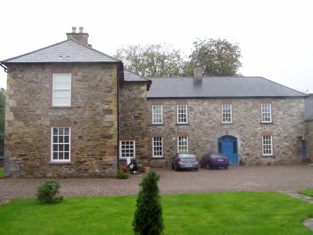
|
| Templevally | The home of the O'Mahony family in the 19th century, occupied by William O'Mahoney at the time of Griffith's Valuation, valued at £26+ and held from Cooper Penrose. Late this house was home to the Condons. The original house is demolished and a later house is now inhabited. |
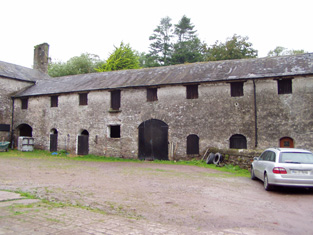
|
| Breeda House | Roger G. Davis held a house in fee, valued at £17, in this townland at the time of Griffith's Valuation. Breeda House is labelled on the 25-inch Ordnance Survey map of the 1890s. A house is still extant at the site. | |
| Ballyglassin House | James Butler held this house valued at £17 from his father-in-law, Roger Green Davis, at the time of Griffith's Valuation. There is still an extant house at the site. | |
| Dromdihy | The building of this house was completed in 1833 for Roger Green Davis. He is recorded as the occupier in the early 1850s holding the house valued at £45 from Sir Arthur De Capell Brooke. The sale rental of 1863 gives a detailed description of this house - "Drumdiah House consists of a centre and two wings, ornamented with Doric columns and with a portico at the eastern end, by the hall is entered, and off which are hot, cold, vapour and shower baths. The first floor comprises five sitting-rooms; on the second floor are four best bedrooms, with dressing-rooms and water-closet......". In the 1940s the Irish Tourist Association Survey reported that the house had been "destroyed in the Troubles". It is now a ruin. |
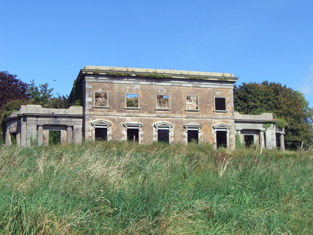
|
| Gortnagappul | This area is marked as the farmyard of Aghadoe House on the first Ordnance Survey map. At the time of Griffith's Valuation a house and offices valued at £28 were held by Roger G. Davis from Richard Uniacke Bailey. A large farm complex exists at the site now. | |
| Aghadoe House (Killeagh) | Lewis writes in 1837 that “The present house is about to be replaced by a castellated mansion”. The earlier house is referred to by Wilson in 1786 as the seat of Simon Dring. Aghadoe wasccupied by Thomas M. Green at the time of Griffith's Valuation. The house, valued at £27, was held by him from Sir Arthur De Capell Brooke. The house is no longer extant. | |
| Mount Uniacke | A home of the Uniacke family in the 18th and 19th centuries, occupied by three generations of persons named Norman Uniacke in the 19th century. Earlier, in 1786, Wilson refers to it as the seat of James Uniacke. In the mid 19th century it was held by Norman Uniacke in fee and the house was valued at £30. The Irish Tourist Association Survey of the 1940s reported that it had been burnt in 1921 and it is no longer extant. | |
| Cornaveigh | A house in this townland was occupied by George Bowles in the mid 19th century, valued at £17 and held from his father, Spotswood Bowles. The original building is no longer extant. | |
| Park | Located on the Ponsonby estate The Park was occupied by John Hudson junior in 1814 and by Robert Hudson in the early 1850s when the house was valued at £10. The Hudsons may have been agents to the Ponsonbys. The address of Charles W. Talbot Ponsonby is given as Park House, Youghal in the 1870s. | |
| Burges House | This house, valued at £14, was occupied by William Hall at the time of Griffith's Valuation and held from Lord Ponsonby. | |
| Inchiquin House | In the early 1850s Henry Hall occupied this house valued at £15 located on the Ponsonby estate. | |
| Knockmonalea House | A house valued at £14, the home of John Hudson at the time of Griffith's Valuation and held from Lord Ponsonby. | |
| Brooklodge | This house situated in the 6 acre townland of Brooklodge was the residence of Henry Marsden and his wife in the first part of the 19th century. By the time of Griffith's Valuation the Reverend Pierse Drew was resident. He was rector of Youghal and a member of the family of Drew of Mocollop Castle, county Waterford. The Reverend Drew held the property from John Pollock and it was valued at £40. | |
| Mary Ville | Mary Ville is marked on the first Ordnance Survey map. In the early 1850s the house was occupied by John Hurley who held it from Colonel George Teulon. It was valued at £10. A house is still extant at the site. | |
| Glenally | A house valued at £15 and held with 6 acres by James Wallis from Mary Allen at the time of Griffith's Valuation. This house is named Glenally on the first Ordnance Survey map. | |
| Clashadonagh [Frogmore] | James Barry held an unoccupied house in the townland of Glanaradotia valued at £20 at the time of Griffith's Valuation. It is labelled Clashadonagh on the 1st edition Ordnance Survey map but as Frogmore House on the 25-inch map of the 1890s. It is now a ruin. | |
| Mistletoe Castle | Marked as Eustace's Castle on the first Ordnance Survey map and apparently straddling the boundary between Cooperalley and Greencloyne, this house was the residence of John Conroy Browne in the second half of the 19th century. At the time of Griffith's Valuation the buildings were valued at £25 and held from William Fitzgerald. J.C. Browne of Mistletoe Castle owned 16 acres in county Cork in the 1870s. The house is stated to have been built in the 1770s as a summer residence for the Villiers-Stuart [Stuart] family. |

|
| Windford | A home of the Hudson family occupied by John Hudson in 1814 and by Robert Hudson in the early 1850s. Though there are buildings at the site the original house does not seem to be extant. | |
| Heathfield Towers | Captain Cotter was resident at Heathfield in 1837. This house was unoccupied at the time of Griffith's Valuation, when it was valued at £8.10 shillings. The immediate lessors were the representatives of Walter Maguire and Mary Giles. It was later the home of the Reverend Pierse Drew who was in residence in the 1870s. |
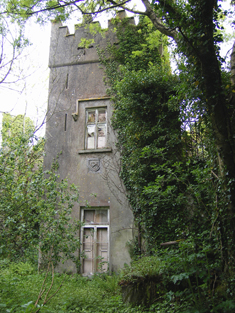
|
| Muckridge House | The Hobson family were resident at Muckridge from at least the mid 1770s. Wilson, writing in 1786, refers to it as the seat of Mr. Hobson. In 1814 Richard Fitzgerald is recorded as resident at Muckridge and in 1837 William Fitzgerald. At the time of Griffith's Valuation Samuel Le Hunte Hobson held the property in fee and the buildings were valued at £37. Still extant, well maintained and for sale at the beginning of 2010. |
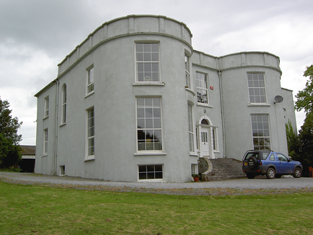
|
| Seafield | The home of Mr John Hudson in 1814 and of Thomas Seward in the early 1850s. Seward held the property from Lord Stuart de Decies and it was valued at £24. The National Inventory of Architectural Heritage suggests it was built in the latter decades of the 18th century. It has recently been under renovation. |
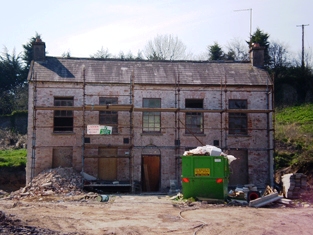
|
| Summerfield | John Hall held a house valued at £15 and 175 acres in fee at Summerfield in the early 1850s. No house of this size is marked on the first Ordnance Survey Map for this townland. Grid Reference is approximate. | |
| Lismore Castle | The castle belonged to Sir Walter Raleigh who sold the property to Sir Richard Boyle in 1602. Charlotte Elizabeth Boyle, the daughter and heiress of the 4th Earl of Cork, married William Spencer Cavendish, 4th Duke of Devonshire and when she died in 1754 the estate passed to the Cavendish family. At the time of Griffith's Valuation, the castle was valued at £140. The 1943 ITA survey contains an extensive description of the castle and its grounds at that time. It has remained in the hands of the Cavendish (Devonshire) estate, housing a prestigous art gallery. See www.lismorecastle.com. |

|
| Myrtle Grove | Myrtle Grove, a Tudor manor house, associated with Sir Walter Raleigh and the sixteenth-century poet, Edmund Spencer At the beginning of the 17th century it was sold to Richard Boyle, 1st Earl of Cork, and later became the property of the Hayman family, who owned it in the 18th and early 19th centuries. In 1837 Lewis writes that it was inhabited by Colonel Faunt. Later occupants include Joseph Wakefield Pim, Sir John Pope Hennessy and the Arbuthnot family. Now in private hands this house is open to the public on certain days in the year. |
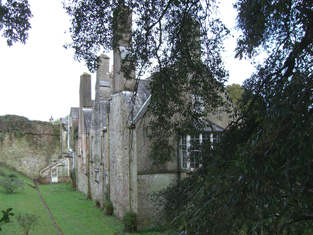
|
| Ballyre | This house was occupied by Crofton Uniacke at the time of Griffith's Valuation when it was valued at £29.15 shillings and held from Mountifort Longfield. Earlier, in 1786, Wilson refers to it as the seat of Crofton Uniacke. The home of Robert M. Bayly in the 1870s. It is still extant. |
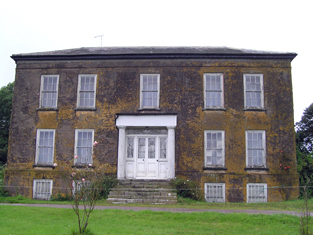
|
| Glengarra | Occupied by Robert Dring in the early 1850s, valued at £25 and held from Robert Uniacke. Still extant and occupied. |
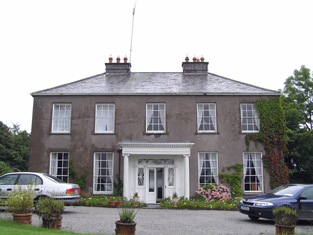
|
| Castletown | The home of James Uniache in 1814 and of Norman Uniacke in 1837. Robert Uniacke held the property in fee at the time of Griffith's Valuation when it was valued at £20. In 1786 Wilson also refers to it as the seat of James Uniacke. This house was a ruin at the beginning of the 21st century but the National Inventory of Architectural Heritage refers to its restoration. |
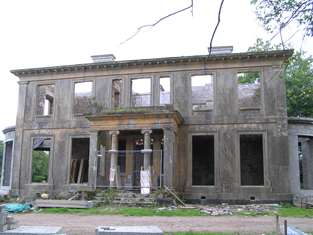
|
| Monaloo | This house was built post Griffith's Valuation. In the 1870s Charles Nason of Monaloo House, Tallow, owned 797 acres in county Cork. It is still extant. |

|
| D'Loughtane | The Ronayne family were resident at D'Loughtane for many centuries. It was lost to the family in the 17th century but recovered through marriage with a Bluett. In the eighteenth century Smith refers to it as "the pleasant seat of Mr. Ronayne". The original house was destroyed by fire and a new one built in the early 19th century. At the time of Griffith's Valuation, it was held in fe by Robert P. Ronayne and valued at £26. The sale rental of June 1851 states that it was erected at a cost of £3,500. Knight writes that it was sold in the Encumbered Estates Court in 1856 to Mr Samuel Allen who sold it later to John Pedder Furlong of Fermoy. Furlong sold the property to the Land Commission in 1910. The house has had a number of occupiers since then and is now owned by the Smiddy family. |
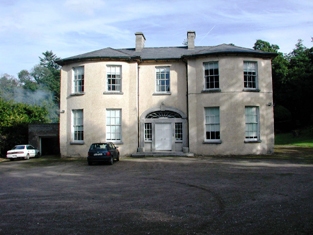
|
| Strancally Castle | John Keily held Strancally Castle in fee at the time of Griffith's Valuation, when it was valued at £61. Lewis refers to it as "a modern castle, seat of J. Keily" in 1837. There is a lithograph and extensive description of the castle and demesne in the sale notice of 1856. After this the castle came into the ownership of the Whitelock Lloyd family. In 1906 it owned by George W. Lloyd and valued at over £63. The 1943 ITA Survey provides a detailed description of the house from that time including the art collection and library. It is still extant and has been renovated in recent years. An extensive farmyard, valued at £37 in 1851, is located in Kilmanicholas townland at X078903. This property was valued at over £40 in 1906. |
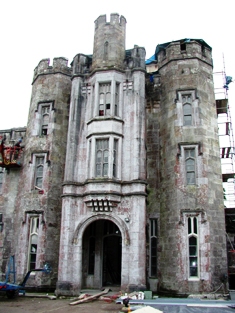
|
| Knockanore House | Rev. Thomas Queally was leasing a property at Knockanore valued at £10 10s from the Keily estate in 1851. It is not shown on the 6-inch Ordnance Survey Map but is labelled Knockanore House on the 25-inch map of the 1890s. The property appears to have fallen into disuse during the twentieth century. | |
| Ballyhamlet House | James Parker was leasing Ballyhamlet from the Earl of Shannon's estate in 1851 when it was valued at £17. There is still an extant house at the site. | |
| Headborough | At the time of Griffith's Valuation, Headborough was held in fee by Mrs. Catherine Smith [Smyth] and valued at £60. Lewis refers to it as the seat of Rev. Percy Scott Smyth in 1837. In 1906 it was owned by Percy Smyth with a valuation of £50. Smith mentions Headborough as the seat of William Smith. In 1943 the ITA survey notes that the stone used in its building was transported from county Kerry. It is still extant and occupied. |

|
| Janeville (County Waterford) | Janewille House was vacant at the time of Griffith's Valuation, when it was part of the Ussher estate and valued at £22 10s. A second house [X027936] in the same location was leased by Henry Smyth from the Ussher estate and valued at £15 10s. In 1837 Lewis refers to Janeville as the seat of A. Keily. Wilson, writing in 1786, refers to it as the seat of John Keily. The house is no longer extant. | |
| Moorehill | Held in fee by William Moore at the time of Griffith's Valuation, when it was valued at £55. Lewis also refers to it as his seat in 1837. Wilson, writing in 1786, notes it a the seat of Rev. Mr. Moore. In 1894 and 1906 it was the property of Captain William Perceval Maxwell and valued at over £70. In 1943 the ITA survey noted it as the residence of Captain Maxwell and mentioned that it was an eighteenth century house. It is still extant and occupied. | |
| Sapperton House | Held in fee by the Moore estate at the time of Griffith's Valuation, when it was valued at £37. It is described as a farm-house. Lewis refers to it as the seat of S. Moore in 1837. Wilson, writing in 1786, notes Sapperton as the seat of Major Moore. It was inherited by Willam Percival Maxwell. In 1906 he was the owner and the house was valued at £37. Sapperton, as well as its extensive farmyard, is still extant and occupied. |
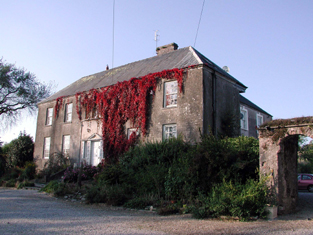
|
| Snugborough | In 1786 Wlson refers to Snugborough as the seat of Mr Smith. Mrs. Helena Greaves was leasing this property to Richard Walsh in 1851 when it was valued at £10 10s. An extensive farmyard complex still survives at the site. |

|
| Ballymartin House | Francis Campion, MD, was leasing this property from the Cavendish estate in 1851 when it was valued at £16. It is present but not named on the 1st edition Ordnance Survey Map but is named Ballymartin House on the later 25-inch map. Brady indicates that the present house is of early nineteenth century date. It is still extant and occupied. |

|
| Ballinanchor House | Ballinanchor was owned by Thomas Foley in 1851 when it was vacant and valued at £12. In 1814, Leet refers to it as the residence of Captain Thomas Poole. A house and farm still exist at the site. | |
| Ballyin House | In 1851 Ballyin House was held in fee by the Devonshire estate when it was valued at £22. Lewis refers to it as the residence of P. Foley in 1837. Smith refers to Ballyin as the seat of Richard Musgrave. The house is still extant and occupied. |

|
| Ballyin Flour Mill | In 1851, Nelson T. Foley was leasing this property, including a substantial flour mill. from the Devonshire estate when it was valued at £110. The mill building is now derelict. |

|
| Toortane House | In 1851 Thomas Foley was leasing this property from the Devonshire estate when it was valued at £33 10s. Lewis refers to it as his seat in 1837. It is still extant and occupied, having been restored. |

|
| Ashbourne House | In 1851 Edmond Foley was leasing this property from the Devonshire estate when it was valued at £21 10s. It is labelled Ashbourne House on the later 25-inch Ordnance Survey Map. | |
| Fortwilliam House (Waterford) | In 1851 J.B. Gumbleton held this property in fee when it was valued at £47 10s. Lewis also refers to it as his seat in 1837 when he describes it as " a handsome demesne with a new house being erected". The ITA survey noted it as the residence of Mr. P. Dunne in 1942. Fortwilliam is still extant and occupied. In 2024 it was offered for sale. |
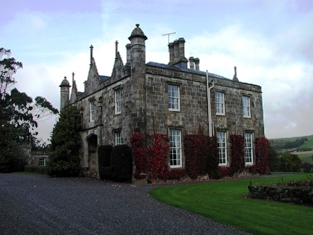
|
| Tourin and Tourin Castle | Tourin House was owned by Sir Richard Musgrave at the time of Griffith's Valuation, when it was valued at £41 10s. An earlier house, attached to Tourin Castle, is located nearby [X095965]. In 1850 it was valued at £49. In 1837, Lewis refers to this earlier Tourin House as the seat of Sir R. Musgrave, "composed partly of an ancient castle, commanding extensive and picturesque views".In 1906 the larger house had a valuation of £64 while the other buildings were valued at almost £10. The Musgrave estate still owned the properties. The ITA survey of the 1940s noted "Toureen" as the resident of Captain Jamison, formerly the property of the Musgraves. Both houses are still extant and occupied. |
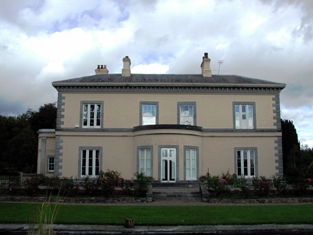
|
| Tourin Castle Farm | This property, valued at £3 in 1851, represents the original Musgrave property and attached to the ruins of Tourin fortified house. Smith refers to a castle at Tourin, owned by John Reeves Nettles and formerly in the hands of the Roches. |
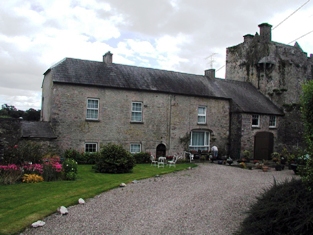
|
| Head View | John Baldwin was leasing this property from the Devonshire estate in 1851 when it was valued at £12. The National Inventory of Architectural heritage suggests it was extended during the later nineteenth century. It is still extant and occupied. In 2010 it was offered for sale. |

|
| Ballyrafter House | Francis Quinlan, MD, was occupying Ballyrafter at the time of Griffith's Valuation, when it was valued at £23 and leased from the Devonshire estate. In 1837 Lewis refers to it as the seat of M. Quinlan. It is now the Ballyrafter House Hotel. See www.waterfordhotel.com |

|
| Ballygalane House | Nicholas P. O'Gorman was leasing an unnamed property valued at £14 from the Devonshire estate in 1851. On the later 25-inch Ordnance Survey Map it is labelled Ballygalane House. Brady notes that Smith had referred to it being owned by the Crotty family. An extant house still exists at the site. | |
| Camphire House | Held in fee by Christopher Ussher in 1851 when it was valued at £28. It was the residence of Christopher M. Ussher in the 1870s. Buildings at this location were in the possession of the Ussher family in 1906 and valued at almost £6. In the 1940s the ITA survey noted that it was occupied by Mrs. Chearnley but owned by the Dobbs family and had formerly been a residence of the Ussher family. The Irish Army also seemed to have occupied part of the building during World War II. Camphire is still extant and occupied. |
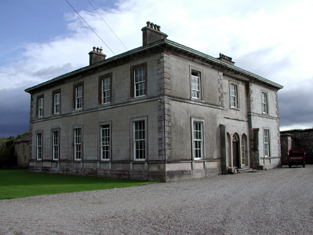
|
| Cappoquin House | in 1851 Cappoquin House was held in fee by Sir Richard Keane and valued at £56 15s.IN 1786, Wilson refers to the house at Cappoquin as Bellmont, the seat of John Kane. The 1855 sale notice describes it as a "handsome, modern and extensive building". In 1906 it was the residence of Lady Adelaide Keane and valued at over £57. Bence-Jones notes that it was burnt in 1923 but later rebuilt in the same style. The ITA survey in the early 1940s noted that the library and art collection were destroyed in the 1923 fire. It is still extant and occupied by the Keane family. The house and gardens are open to the public at certain times. |

|
| Glenshelane Cottage | Leased by Sir Richard Keane to John Keane in 1851 when it was valued at £14. The 1855 sale notice describes it as "a handsome cottage". Later in the possession of Justin Deane Freeman and leased to Thomas Haly. Offerd for sale in the Landed Estates Court in February 1864, when the owner was Charles St. John Herbert and the petitioner, Maria Deane Freeman. The house is still extant and occupied. |

|
| Lisfinny House | Major Edward Croker was leasing this house from the Devonshire estate in 1851 when it was valued at £23. Lewis also recorded it as his residence in 1837 when he noted that "the ancient castle, built by the Earl of Desmond, has been converted into a handsome residence". It is still extant and occupied. |
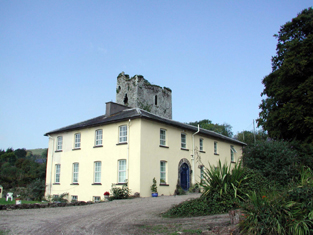
|
| Lismore Villa | Leased by the Devonshire estate to H.K. Hemming at the time of Griffith's Valuation, when it was valued at £30. It is still extant. |

|
| Bellevue (Lismore) | Paul Shewcraft was leasing this property from the Devonshire estate in 1851 when it was valued at £19 10s. | |
| Rath House | In 1851 John Carroll was leasing this property from the Devonshire estate when it was valued at £16. Labelled as Rath House on the later 25-inch Ordnance Survey Map. | |
| Lismore Townparks West | In 1851 William Baldwin was leasing this property from the Devonshire estate when it was valued at £11. | |
| Salterbridge House | The current Salterbridge House was mainly constructed in 1849 but incoroporated an eighteenth century house. Wilson, writing in 1786, refers to "Salta Bridge" as the seat of Richard Musgrave, "remarkable for its extensive orchards". At the time of Griffith's Valuation it was the residence of Richard Chearnley and valued at £68. In 1906 Salterbridge was owned by Henry P Chearnley and valued at over £70. The house remained in the family until the 1950s and subsequently became part of the Wingfield estate. It is still extant and open to the public at certain times. An associated gate-lodge is available for self-catering accommodation through the Irish Landmark Trust. See www.irishlandmark.com. |

|
| Castle Farm | IN 1851 the farmhouse at Castlelands was held in fee by the Devonshire estate and valued at £27. The farm house is still extant and occupied. A large farmyard complex was located at X035986. In 1906 the buildings at this location had a valuation of £15 10s. |

|
| Drumroe House (Waterford) | In 1851 this property was leased by Sir W.J. Homan from the estate of Mansergh St. George, when it was valued at £45. William Jackson Homan was a member of the Homan family of county Westmeath and married to Lady Charlotte Stuart. Local sources suggest he acted as a steward on the Dromana estate. The house is now a ruin. | |
| Kilbree House | At the time of Griffith's Valuation, Phillip Chearnley was leasing this property from Matthew Whelan when it was valued at £28. There is still an extant house at this site. Another property in this townland is referred to in ITA Survey of the 1940s as Kilbree Castle. This building, described as "in ruins" on the 25-inch Ordnance Sirvey map of the 1890s, had been reconstructed and was occupied at the time of the survey by Gerald Stuart. In 1786 Wilson mentions that Kilbree had "formerly belonged to the Knights Templars". Buildings are still extant at the site. | |
| Tubbrid (Lismore) | In 1851 this property was held in fee by Townsend Keily and valued at £23 10s. The property is still extant and part of a large farming enterprise. | |
| Kilmore House (Tallow) | Held in fee by Rev. William Percival at the time of Griffith's Valuation, when it was valued at £37. Lewis refers to it in 1837 as "Kilmore Hill, residence of Rev. W. Percival, a handsome seat on the new line of road to Youghal". Wilson, writing in 1786, refers to the Perceval residence near Tallow as "Kilmahoe". In 1906 it was still owned by William Percival and valued at £37 10s. |
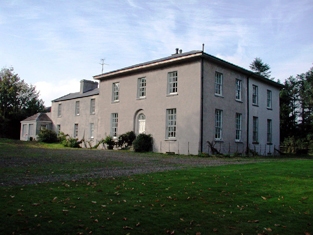
|
| Roseville (Tallow) | Leased by William Parker from the Devonshire estate at the time of Griffith's Valuation when the buildings were valued at £20 10s. It is also recorded as his address in the 1870s. Roseville is still extant and occupied. |

|
| Ballynatray House | Held in fee by Richard Smyth at the time of Griffith's Valuation when the buildings, including a mill, were valued at over £100. Lewis also refers to it as the seat of R. Smyth in 1837 when he describes it as "finely situated in a much improved demesne". In 1814 it was the residence of Grice Smyth who Brady cites as the builder. Charles Smith notes an earlier residence as the seat of Richard Smith. In 1943 the ITA survey referred to is as the seat of Captain Holroyd Smyth. Ballynatray is still extant and the focus of an 850-acres estate, with notable gardens. See www.ballynatray.com for details. |
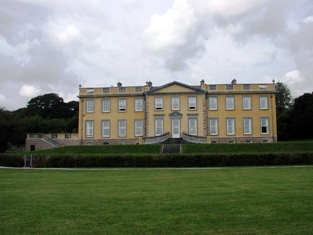
|
| Cherrymount House | Described by Lewis in 1837 as the "occasional residence" of Captain Parker. It was being leased by Thomas Carpenter from the Parker estate at the time of Griffith's Valuation, when it was valued at £24 10s. In 1852 it was offered for sale in the Encumbered Estates Court when it was described as "a suitable dwelling house and demesne, formerly occupied by the owner". It was purchased by Maj-Gen Sir Joseph Thackwell and remained in the possession of that family until the twentieth century. It is now a ruin. | |
| Garryduff House | Garryduff was held in fee by Thomas Garde at the time of Griffith's Valuation, when the buildings were valued at £35 10s. Lewis refers to it as the seat of H. Garde in 1837. This house is no longer extant. | |
| Tivoli (Cappoquin) | Tivoli was being leased by Henry Dennehy from the Keane estate at the time of Griffith's Valuation, when it was valued at £17. It was included in the sale of Dennehy's estate in the Encumbered Estates Court in 1857 when it was in the owner's possession. The house is still extant and occupied. |

|
| Mayfield (Lismore) | The sale notice concerning the property of Robert Dring O'Grady in the barony of Coshmore and Coshbride, county Waterford, includes details of the house built on the property by Captain O'Grady in the 1850s. It was "of modern construction" and had cost over £1200. |
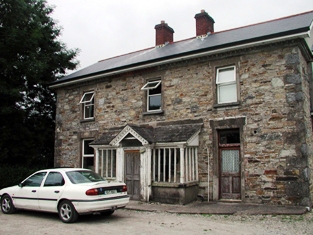
|
| Aglish House (Decies) | Aglish House was leased by James O'Brien from the representatives of James Nagle, in 1851, when it was valued at almost £14. It is still extant and occupied. |
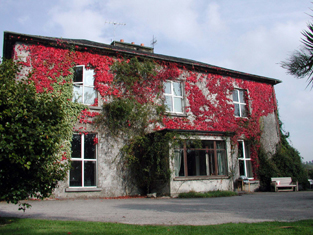
|
| Ballingowan House (South) | Robert Dower was leasing this property from William Villiers-Stuart at the time of Griffith's Valuation, when it was valued at £13 5s. A house still exists at this site. | |
| Bleach | At the time of Griffith's Valuation, Charles Graves was leasing property from the Villiers-Stuart estate which included a house and mill. The complex was valued at over £37. By the later nineteenth century Bleach House is shown here but the mill in not shown. A house is still extant at the site. | |
| Cooneen Mill | Charles Musgrave was leasing this extensive property from Sir Richard Musgrave at the time of Griffith's Valuation, when it was valued at £31 5s. It is recorded as disused on the 25-inch Ordnance Survey Map of the 1890s. Some ruins remain at the site. | |
| Shanakill (Decies) | In 1851, this property was leased by Edmund Dower from Thomas J. Fitzgerald when it was valued at almost £10. A house and farm are still extant at this location. | |
| Ballynaparka House | In 1851, this house was held in fee by Thomas J. Fitzgerald and valued at over £31. Leet had recorded it as the seat of Patrick Dwyer in 1814. In 1906 it was still the property of the Fitzgerald estate and valued at over £10. There is still a house at this location. | |
| Villierstown House | In 1851 leased by Rev. Hans Butler from the Villiers Stuart estate when it was valued at £14 5s. Still extant and occupied. |

|
| Ardocheasty | John B. Wallace was leasing this house from the Carew estate in 1851 when it was valued at £12 5s. Farm buildings are extant at the site. | |
| Odell Lodge/Melrose House | Leased by Rev. Thomas Thurtle from the O'Dell estate in 1851 when it was valued at £18 10s. The National Inventory of Architectural Heritage indicates it was later known as Melrose House. In 1942 the ITA survey noted the property as the Melrose Hotel, formerly Odell Lodge. The survey states that it was built by the Odell family as a summer residence. It is still extant and occupied. |
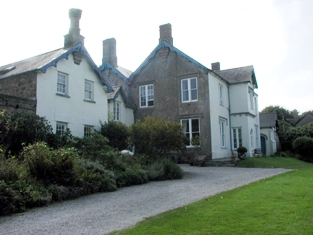
|
| Rock House (Ardmore) | Richard Usher was leasing this property from the O'Dell estate in 1851 when it was valued at £18. Though the building is still visible it is not named on the later 25-inch Ordnance Survey map. The National Inventory of Architectural Heritage suggests it may once have been three houses that were amalgamated into one property, possibly in the early nineteenth century. It is still extant. |
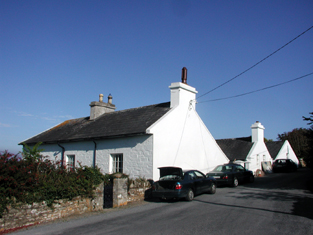
|
| Dysert (Ardmore) | Rev. Ambrose Power was leasing a property from the O'Dell estate in 1851 which was valued at £12. | |
| Loskeran House | Walter Carew was leasing this house to Thomas Clancy in 1851 when it was valued at £17. It was included in the sale of Carew's estate on 19 December 1851, in which it is described as "lately erected and occupied by Walter John Carew". The sale notice mentioned that it was occupied by the "representatives of the late Mr.Clancy". The house is not labelled on the later 25-inch Ordnance Survey Map. | |
| Ardmore or Monea House | Simon Bagge was leasing this property from the Ecclesiastical Commissioners in 1851 when it was valued at £33. It is labelled as Ardmore House on the 1st edition Ordnance Survey map and as Monea House on the later 25-inch edition. The ITA survey indicates that it was sold by John Leonard Bagge in 1921 and subsequently became an Irish college. | |
| Ardsallagh House | Mrs.Olivia Ronayne was leasing this property from the estate of Lord Stuart de Decies at the time of Griffith's Valuation, when it was valued at £10 10s. It is labelled Ardsallagh House on both the 6-inch and 25-inch Ordnance Survey maps. Extant buildings remain at the site. | |
| Laurentum | At the time of Griffith's Valuation, Richard Coughlan was leasing this property from the Villiers-Stuart estate, when it was valued at £11. It does not appear on the 6-inch Ordnance Survey map but is named as Laurentum on the later 25-inch map. There is still an extant house at the site. | |
| Ballynamultina House | Francis Kennedy was leasing this property from the Mansfield estate at the time of Griffith's Valuation, when it was valued at £18 10s. Leet also refers to it as his residence in 1814. Smith states it was the seat of Mr. Mansfield in the late eighteenth century. A house is still extant at the site. | |
| Clashmore | Clashmore was held in fee by the Earl of Huntingdon at the time of Griffith's Valuation, when it was valued at £34. The site marked on the 1st-edition Ordnance Survey map is not that recorded on the later 25-inch map. Smith refers to the earlier house as the seat of Mr. Power and Wilson refers to it as the seat of Richard Power in 1786. The Irish Tourist Authority Survey of the 1940s suggest the later house was never fully completed and by then had all but disappeared. Much of the extensive farmyard, however, is still extant and in use. |
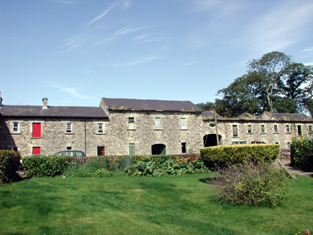
|
| Bayview (Clashmore) | Rev. Michael Purcell was leasing this property from Lord Decies estate in 1851 when it was valued at £12. There is still an extant house at this site. | |
| Rockview (Clashmore) | Leased by Richard Bayley from the Villiers-Stuart estate at the time of Griffith's Valuation, when it was valued at almost £7. It is labelled Rockview on both the 6-inch and 25-inch Ordnance Survey maps. There is still an extant house at the site. | |
| Glenlicky Mill | At the time of Griffith's Valuaton Rev. James Elliott was leasing this substantial property to Thomas Page, when it was valued at £44. It included a house and mill. Noted on the 25-inch Ordnance Survey Map of the later nineteenth century as Glenlicky Mill. The buildings are now ruinous. | |
| Lackendarra House | In 1851, Mrs. Eleanor Fitzgerald was leasing this property from Rev. James Elliott when it was valued at £11 5s. In 1894 it appears to have been occupied by a Russell family. | |
| Monatray | In 1851 Pierce S. Smith [Smyth), a minor, held Monatray in fee when it was valued at £35. In 2013 it was offered for sale. The sale details suggest it was built by Percy Smyth of Headborough as a summer residence in the 1830s. In the twentieth century it was occupied by a religious order and later a country house club before returning to private ownership in the 1980s. In recent years the house name is spelt Monatrae. In 2014 Monatrae was offered for sale. |
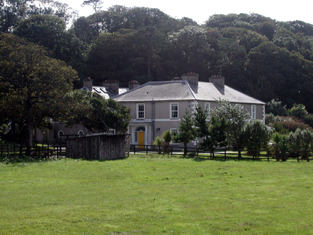
|
| Newtown House (Kinsalebeg) | Built after the first Ordnance Survey, Michael Kennedy was leasing this property from the Smyth estate in 1851 when it was valued at £13 10s. It is noted on the 25-inch Ordnance Survey Map as Newtown House. There is still an extant house at the site. | |
| Pilltown House | Declan Tracy was leasing this property from the Kennedy estate at the time of Griffith's Valuation, when it was valued at over £12. Smith refers to it as "Pilltown, not long since the estate of the Walshes". The house is labelled Pilltown House on the 25-inch map of the 1890s. It is no longer extant. Tracy is noted as the owner of over 450 acres in county Waterford in the 1870s. A substantial mill, valued at £39, in the same townland was being leased by Peter Moore Fisher [X129800]. It was included in the sale of Fisher property in the Landed Estates Court in November 1865. The mill appears to have fallen into disuse by the end of the nineteenth century though the ruins remain. | |
| Mayfield (Kinsalebeg) | In 1851 Thomas P. Carew was leasing this property from the Smyth estate when it was valued at over £20. A house labelled Mayfield appears at this location on the 1st edition Ordnance Survey map. In 1837 Lewis noted it as the seat of J. Gee. It is still extant and occupied. |
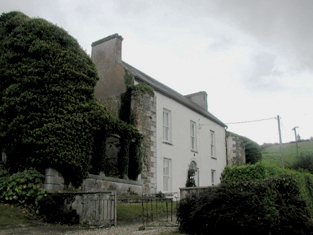
|
| Prospect Villa (Kinsalebeg) | Prospect Villa seems to have been built in the later nineteenth century, close by an earlier house known as Mayfield. A house at Prospect Hall is described by Smith as "a handsome seat with good improvements made by the late Stephen Bernard" In 1786 Wilson refers to "Prospect Hall" as the seat of Mr. "Barnet". There is still an extant building at the site. |
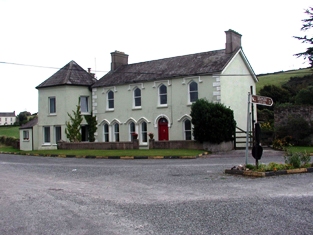
|
| Woodbine Hill | George Roche held this property from the Smyth estate in 1851 when it was valued at over £26. Local sources suggest it was built by him earlier in the nineteenth century. It is still extant and occupied. |
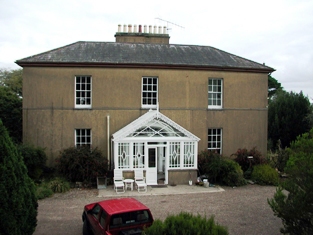
|
| Glencorran | In 1851 Richard Fuge was leasing this property from Lord Decies estate when it was valued at £23. A building, to which alterations have been made, still exists at the site. | |
| Glenwilliam (Decies) | In 1851, Reverend Garrett Prendergast was leasing this property from Richard Fuge, when it was valued at £15. Local sources suggest Reverend Prendergast was the parish priest of Ardmore during and after the Famine. A house and substantial farm still exist at Glenwilliam. | |
| Paulsworth | At the time of Griffith's Valuation, Mrs. Maryann Paul was leasing this property to John Power, when it was valued at almost £24. The house is still extant and occupied. |
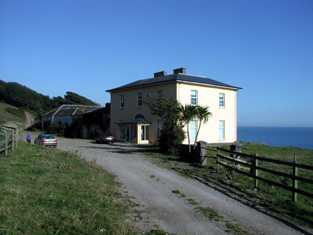
|
| Cappagh (Decies-within-Drum) | In 1851 James Gee was leasing this property from Lord Decies estate when it was valued at £19. This area has been subjected to severe coastal erosion and these buildings are no longer extant. | |
| Clashanahy | Sir Richard Musgrave held this property on lease from the Decies estate at the time of Griffith's Valuation, when it was valued at almost £18. There is still an extant property at this site. | |
| Ardoginna House | Leased by Sir Joseph Neale McKenna from the estate of the Duc deCastres until its sale in 1864, when it was bought by McKenna. Formerly a residence of the Coghlan family. Eliza, a daughter of this Coghlan family, married the Duc deCastres. Ardoginna was owned by the McKenna family until the early twentieth century. It was briefly used as an Irish college before the purchase of Monea House for that purpose. Brady notes that it is now a ruin. In the 1780s, both Taylor and Skinner and Wilson had noted a house called Grey Rock as a residence of the Coghlan family in this area. |
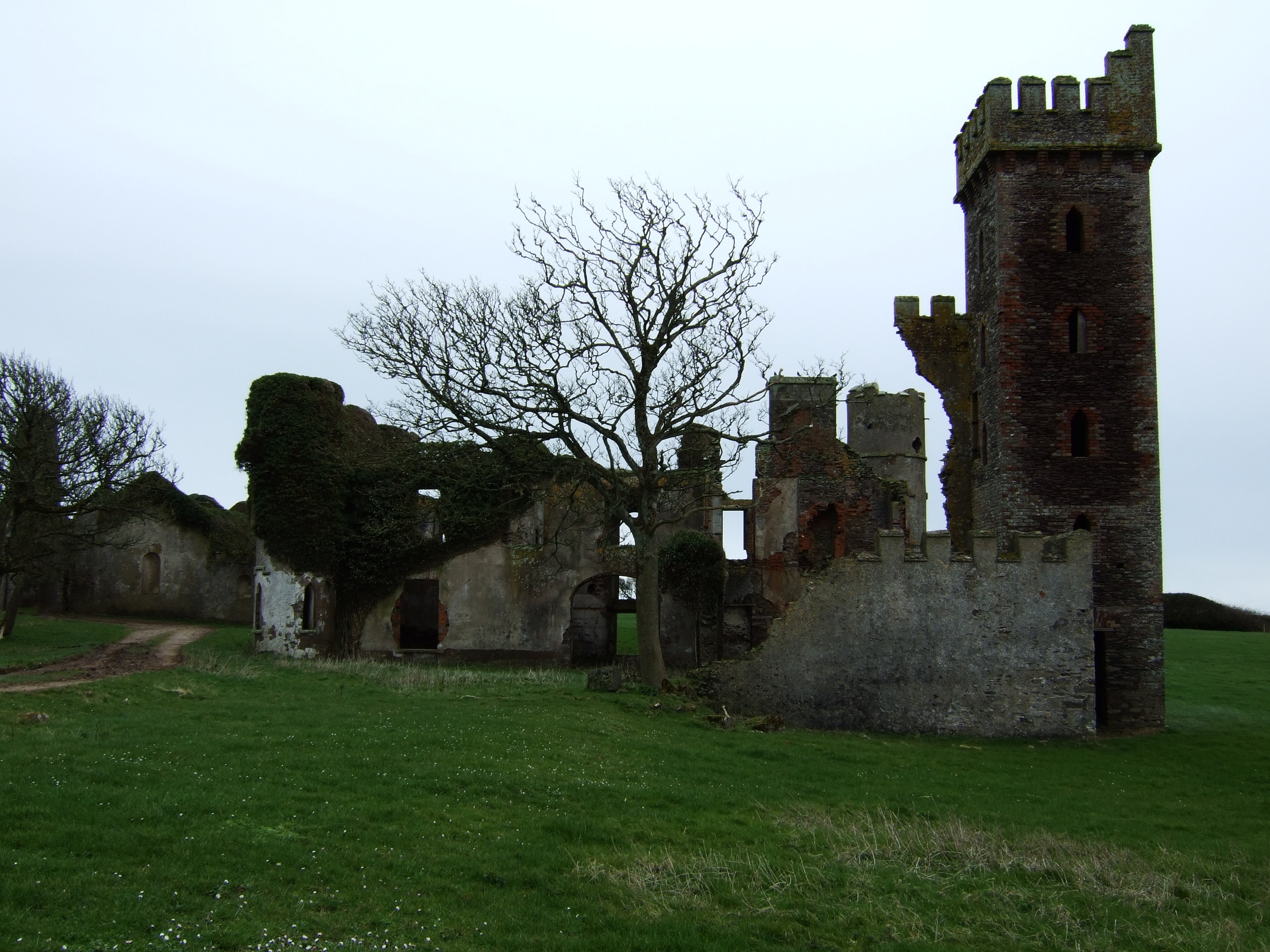
|
| Affane House | Held in fee by Samuel Browning Power in 1851 when it was valued at £32. Lewis refers to it as the seat of S. Power in 1837. It was the property of Samuel J. Power in 1906 and still valued at £32. Brady notes that the house incorporates material from the late seventeenth century house owned by the Greatrakes famly. In the 1780s Taylor and Skinner refer to it as a residence of the Browning family. It is now almost a ruin. |

|
| Belleville Park (Affane) | George B. Power held Belleville Park in fee at the time of Griffith's Valuation, when it was valued at £39. Lewis noted it as the seat of S. Poer in 1837. Wilson, writing in 1786, mentions "Bettytville" as the seat of Pierce Power. The ITA survey states that it was afterwards occupied by members of the Tanner and Wyse families. At the time of the survey, in 1942, it was the home of Richard Keane, It is still extant and occupied. |
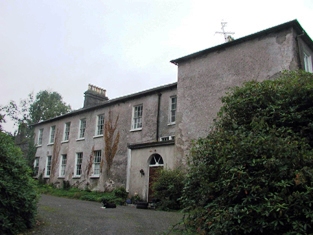
|
| Richmond House (Affane) | Maj John H. Alcock was leasing this property from Henry Dennehy at the time of Griffith's Valuation when it was valued at £29. Lewis also noted it as his seat in 1837. The National Inventory of Architectural Heritage indicates it was also linked with the Villiers Stuart family. It is still extant and occupied. |

|
| Dromana | The seat of the Villiers-Stuart family, Lord Stuart de Decies, and held in fee by them in 1851 when it was valued at £101. In 1837 Lewis had noted that "its hanging gardens presents a picturesque and interesting feature". Charles Smith, referring to it as a noble seat of the Earl of Grandison, provides a detailed description of how it looked in the later eighteenth century. An account of its appearance in the 1940s is given in the Irish Tourist Association files. The National Inventory of Architectural Heritage indicates it is a seventeenth century house possibly incorporating parts of a medieval tower house. It was later extended and renovated but this Georgian extension was demolished in the 1960s leaving the original seventeenth century building. It is occasionally open to the public. |
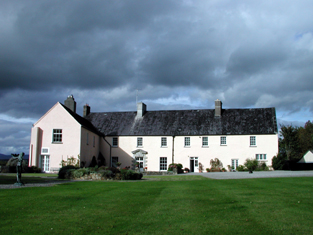
|
| Derriheen House | In 1851 Mrs. Grace Mansfield was occupying this property, which was in the hands of the Court of Chancery at the time. It was valued at £24. It is still extant and occupied. Lewis refers to it in 1837 as the seat of C. Maunsell. |
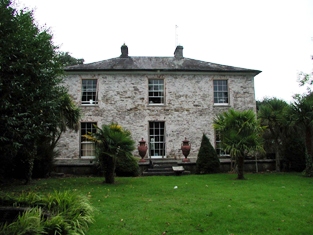
|
| Monyvroe | In 1851 Edmund Power held this property from Lord Decies estate when it was valued at £11 10s. There are still extant buildings at the site. | |
| Mountrivers (Affane) | In 1851, Sir Charles Shaw was leasing this property from the Gumbleton estate when it was valued at £27. The Villiers Stuart Papers in PRONI suggest Shaw was the head agent for that estate from the late 1840s.Lewis refers to it as the seat of Rev. G. Gumbleton in 1837. Mountrivers was demolished in the 1990s. A nearby property [X104975]. valued at £15, was held by Shaw from the Musgrave estate and used as a fever hospital. |

|
| Carrowgarriff | At the time of Griffith's Valuation, Edward Power was leasing this property from the Osborne estate when it was valued at £11 10s. The site is now occupied by farm buildings. | |
| Colligan Lodge | Reverend Craddock was leasing this property from the McGuire estate at the time of Griffith's Valuation, when it was valued at £15 10s. The house is labelled Colligan Lodge in the 25-inch Ordnance Survey map of the 1890s. The famous greyhound "Master McGrath" was born at Colligan Lodge in 1866, when it was the home of James Galwey. In 1906 it is recorded as part of the Earl of Dartry's estate and valued at almost £25. Waterford County Museum researchers note that the building was dismantled in the 1940s. | |
| Ballyduffbeg | James Lynch was leasing this property from the Devonshire estate at the time of Griffith's Valuation, when it was valued at £10. | |
| Ballyduffmore | Eleanor Walsh was leasing this property from the O'Dell estate at the time of Griffith's Valuation. Ballyduffmore is still extant and occupied. |

|
| Ballyguiry | James Wall was leasing this property from Lord Decies estate in 1851 when it was valued at £11 10s. There are still extant buildings at the site. | |
| Coolnagour House | In 1851 the occupier, Arthur McGuire Giles, was leasing this property from Catherine Giles, when it was valued at £13 5s. Lewis refers to it as the seat of W. Giles in 1837. The house is still extant and occupied. | |
| Curraghamoreen House | Rev. John O'Meara was leasing this property from the Villiers-Stuart estate in 1851 when it was valued at £14. The house is still extant and undergoing renovations. | |
| Bewley | Captain Wiliam Chearnley was leasing this property to Geoffrey Norris at the time of Griffiths Valuation when it was valued at over £9. A farm is still extant at the site. | |
| Woodstock House (County Waterford) | John Hackett was leasing this property to Thomas Walsh in 1851 when it was valued at £21. It was included in the sale notice for the Walsh estate in May 1851 where it is noted that "a sum of over £2000 was expended in building the mansion". The house appears to have also been known as Whitechurch House. In 1894 Slater refers to it as the seat of Lt-Col. Charles Hely. The ruin of the original house was still visible until this century but a modern building occupies the site now. | |
| Ballygagin | At the time of Griffith's Valuation, Thomas Garde was leasing this property to John Slattery when it was valued at £15. Earlier, in 1786, Wilson refers to it as the seat of Mr. Giles. There is still an extant house at the site. | |
| Ballynamuck House | At the time of Griffith's Valuation, Mrs. Eleanor Hearne was leasing this property to Patrick McCarthy when it was valued at £10 10s. In 1814 Leet notes it as the residence of Miss McGrath. Farm buildings now occupy the site. | |
| Lisfennel House | In 1851 John Keily was leasing Lisfennel to Beverley Keily when it was valued at £12 10s. Though there are buildings at the site it is not named on the 6-inch Ordnance Survey Map but is labelled Lisfennel House on the 25-inch map of the 1890s. It was owned by Mrs. Susan Keily in 1906. when the house was valued at £14 10s and other buildings were valued at £6. There is still a house at the site. | |
| Springmount (Dungarvan) | At the time of Griffith's Valuation, George Keily was leasing this property from John Keily when it was valued at £13 10s. In 1837 Lewis had referred to it as the seat of T.E. Kelly. Extensive modern building has taken place at the site. | |
| Mountain Castle | In 1851 James O'Keeffe was leasing this property from the Chearnley estate when it was valued at £17 10s. An 1834 document in the National Library of Ireland suggests it was formerly in the possession of the Barron family The property is still extant. |

|
| Rockfield (Modelligo) | Pierce Hely held this property in fee at the time of Griffith's Valuation, when it was valued at £33 10s. Wilson, writing in 1786, refers to "Rockville" as the seat of Mr. Hely. The house is still extant and occupied. The National Inventory of Architectural Heritage notes its association, not only with the Hely family, but also that of English and Grove-White. |

|
| Scart Cottage | Thomas Hely was leasing this property from Christopher Griffith in 1851, when it was valued at almost £8. A house still exists at this site. | |
| Lackandarra Lodge | At the time of Griffith's Valuation, Richard Chearnley held this property in fee when it was valued at almost £10. On the 25-inch Ordnance Survey Map of the 1890s it is labelled Lackandarra Lodge. A farm is still extant at the site. | |
| Lackandarra A | Mrs. Eleanor Power was leasing this property from the Chearnley estate at the time of Griffith's Valuation, when it was valued at £9. There are still buildings extant at the site. | |
| Johnstown House (Decies) | Mrs. Mary Barron was leasing this property from the Villiers-Stuart estate in 1851 when it was valued at £10 10s. There is still an extant property at the site. | |
| Clonkerdin House | Mrs Catherine Quinlan was leasing this property from Lord Stuart de Decies in 1851 when it was valued at £30. It is still extant and occupied. In 2014 it was offered for sale. |

|
| Barranastook | In 1851 Simon Brien was leasing this property from the Musgrave estate when it was valued at £12. In 1906 Sir Richard Musgrave still held buildings at Barranastook valued at £1 10s. | |
| Ballintaylor | In 1851 Thomas Egan (junior) was leasing this property from the Musgrave estate when it was valued at £11. It was still part of the Musgrave estate in 1906 when it was valued at £9 10s. Leet had noted it as the seat of Maurice Power in 1814. Smith states that it was the seat of the Usher family having formerly been in the possession of the Osborne estate, a house being built here by Sir Richard Osborne in 1619. The property is no longer extant. | |
| Whitechurch | In 1851 this property was held in fee by Florence McCarthy when it was valued at £32. Local sources suggest it was once part of the Earl of Huntingdon's estate. The ITA survey noted that it had previously been the property of Dr. Forsythe, and, from the 1920s onwards, owned by the McGrath family. It is still extant and used as self-catering accommodation. |
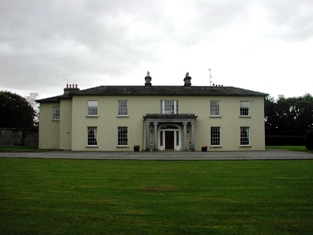
|
| Cappagh House (Old) | Richard Ussher held this property in fee in 1851 when it was valued at £41. This is the original Cappagh House, built by the Ussher family in the late eighteenth century and referred to in 1774 by Smith as the seat of John Usher. It is still extant, though replaced, in the late nineteenth century, by the modern Cappagh House. |
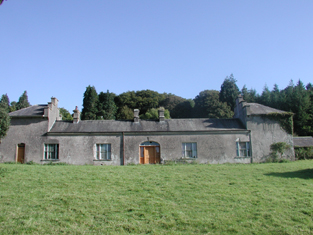
|
| Cappagh House | A house constructed in the later nineteenth century by Richard J. Ussher. In 1906 it was owned by him and valued at over £52. In 1942 the ITA survey notes it as the property of Percy Arnold Ussher. It is still extant and occupied. |
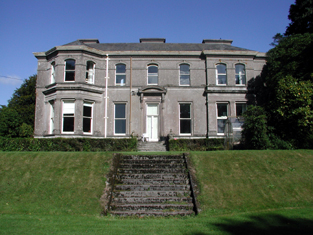
|
| Cappagh A | John Morrissy was leasing this property from the Ussher estate in 1851 when it was valued at £13. An extensive farm property still exists at the site. | |
| Carriglea House | Built by John O'Dell in the early ninetenth century, in 1851 this property was held in fee by Edward O'Dell when it was valued at £59. On the 25-inch Ordnance Survey map of the 1890s it is labelled Carriglea Convent. It is still extant and a centre for care services. |

|
| Mountodell | In 1851 this property was being leased by Rev. Edward Ellis from the Odell estate when it was valued at £9. In 1774 Charles Smith stated it was a seat of the Odell family as did Wilson in 1786. The property is still extant. | |
| Lauragh | Matthew Walsh was leasing this property from the Musgrave estate at the time of Griffith's Valuation, when it was valued at £12. | |
| Nicholastown Mill | Beresford Power was leasing this property to Walter Collander at the time of Griffith's Valuation, when it was valued at £11. The ruin of the building still remains at the site. | |
| Ballylemon Lodge | In 1906 Kathleen M. Walsh was the owner of this property, then valued at over £13. It had been built in the later nineteenth century and is shown on the 25-inch Ordnance Survey map of the 1890s. Local sources state that it was also the home of John O'Keeffe, MP for Dungarvan in the 1870s. An earlier property in the Ballylemon area was described by Smith in 1774 as "anciently the seat of Sir Richard Osborne". | |
| Clifton | Situated on the coast just south of Youghal, Clifton was occupied by Sir William Homan in 1837. Griffith's Valuation records John Keily junior as resident when the house was valued at £62. Buildings are still extant at the site. | |
| Green Park | Captain H. Parker of the Royal Navy was resident at Green Park in 1837. By the time of Griffith's Valuation William Carberry was the occupier holding the building valued at £38 from Pim Jackson. Extensive modern building has occurred in this area. | |
| Littlebridge | In 1786, Wilson refers to Littlebridge as the seat of Andrew English. By the time of Griffith's Valuation, this area was part of the estate of Sir Richard Keane. | |
| Ballyvergan House | In 1786 Wilson refers to Ballyvergin as the seat of Robert Uniacke. By the time of Griffith's Valuation, this townland is part of the Leader estate. The house, valued at £12 was occupied by James O'Brien. This may be the property labelled Ballyvergan House on the 25-inch Ordnance Survey map in the 1890s.Buildings still exist at the site. |

